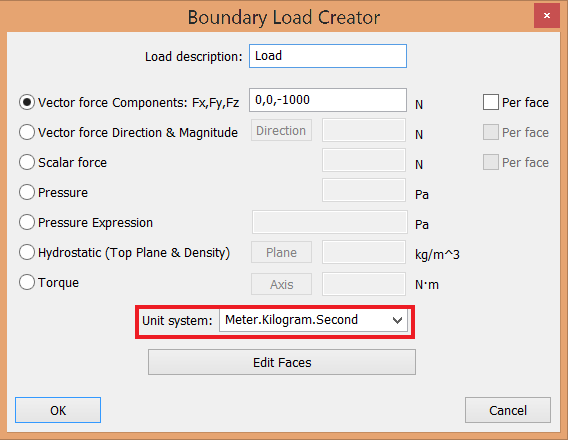Unit Systems
Scan&Solve Pro relies on the unit system chosen when a model is created. The unit system entered into Rhino is used by Scan&Solve Pro to interpret the geometry when restraints and loads are applied to the model.
Creating model with incorrect unit system
If an incorrect unit system is supplied to Rhino when the model is created, the loads and danger level applied to the model will likely be significantly different than expected.
In the following example, a beam is restrained on the left end boundary and has a 1000 N load applied on the right end boundary which causes bending of the beam.
In the first image, the model was created by choosing the millimeters unit system in Rhino. The danger level of the beam is very high.
However, if the beam was intended to be modeled in meters, the result is quite different: the beam will not fail. Note that in both cases, Rhino shows the dimension of the beam to be 10.00.
Entering loads in a separate unit system
Scan&Solve Pro can accept loads in different units than the unit system chosen for the geometric model. It will automatically convert the loads to be consistent with the model's unit system. For example, it is possible to create the model with a millimeter unit system and apply loads in pounds.
However, the unit selection in the load creator only applies to the load being defined. It will not convert the model's geometry to another unit system.


